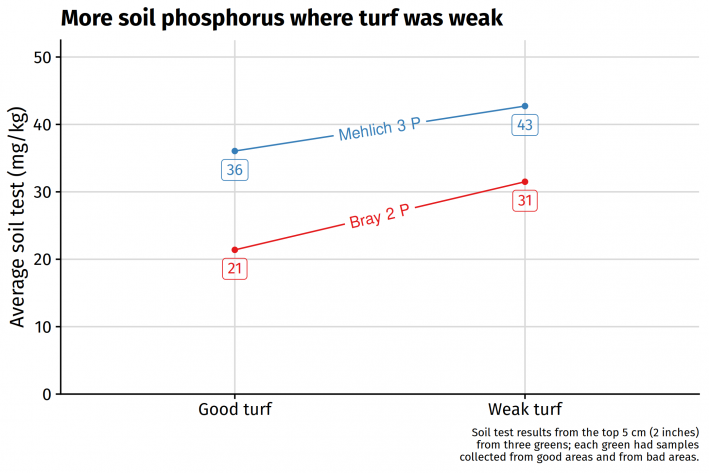Soil phosphorus was higher where turf was weak
 View Larger
View Larger
A golf course superintendent noticed that the putting greens had some turf that was performing well, and that there were areas of turf on the greens that were weak. He had not applied any phosphorus (P) fertilizer and was wondering if the cause of the weak turf may be a P deficiency. Soil samples were collected to a 5 cm depth from three greens, with two samples collected from each of those greens. One sample was collected from a good turf area on each of the three greens, and a second sample was collected from a weak turf area on those same greens.
These six soil samples, three from good turf and three from weak turf, were tested at Brookside Labs for P by the Mehlich 3 extraction method and by the Bray 2 extraction method. The median soil pH of both the good and the bad turf areas was 6.6. The average soil P was actually lower in the good turf areas than it was in the weak turf. That is, where the turf was not performing well, there was more P in the soil.
At first this may be a surprise, but this is not an uncommon phenomenon. Healthy grass grows more and has a more extensive root system that extracts more nutrients from the soil. Over time, this can lead to soil conditions in which the nutrient content is lower in areas where the best turf is growing, and soil nutrient content is higher in areas where weak turf is growing. That seems to be the case on these putting greens.
The Mehlich 3 P levels in both good and weak turf areas are both well above the MLSN minimum value for P. There does not appear to be a P limitation on growth based on the Mehlich 3 test.




